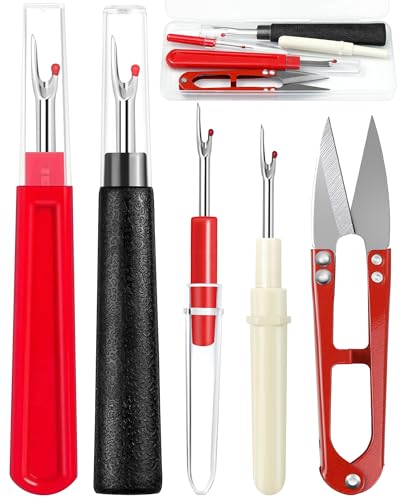We’ve all been there—you’re sewing away, and suddenly, you notice a twisted seam ruining your hard work. It’s frustrating, but don’t worry! Correcting a twisted seam is easier than you might think. With a few simple steps, you can have your project looking neat and polished in no time.
Understanding Twisted Seams
Twisted seams can disrupt the flow of a sewing project. Recognizing and addressing these issues promptly ensures a polished final product.
Causes of Twisted Seams
- Fabric Grain: Cutting fabric against the grain can lead to twisting. Always align cut pieces with the weave.
- Improper Stitching: Uneven tension while sewing affects alignment. Consistent tension prevents distortion.
- Handling Techniques: Lifting fabric incorrectly or pulling while sewing may cause seams to twist. Supporting fabric properly during stitching helps maintain alignment.
- Sewing Machine Settings: Incorrect machine settings, like inadequate presser foot pressure, can lead to twisted seams. Regularly checking and adjusting settings is vital.
How to Identify a Twisted Seam
- Visual Inspection: Look for seams that aren’t straight. A twisting seam usually veers left or right instead of following a straight line.
- Fabric Curls: Twisted seams may cause fabric edges to curl under. This can indicate uneven stitching.
- Darts and Curves: Examine darts and curved seams closely. Twisting often occurs in these complicated areas, impacting the overall shape.
- Touch Test: Run your fingers along the seam. If it feels uneven or bumps exist, twisting might be the culprit.
Tools and Materials Needed
Correcting a twisted seam requires specific tools and materials to make the process smooth. Gathering the right items ensures efficient work and enhances the quality of the repair.
Essential Sewing Tools
- Seam Ripper: A seam ripper easily removes stitches, enabling access to the twisted area without damaging the fabric.
- Tailor’s Chalk or Fabric Marker: These tools help mark areas for correction, providing clear guidelines for subsequent stitching.
- Iron and Ironing Board: Pressing seams flat before and after repair helps achieve a neat finish.
- Measuring Tape or Ruler: Accurate measurements ensure even alignment of fabric pieces while correcting the seam.
- Sewing Machine: A reliable machine with adjustable tension settings helps recreate the original stitch type.
Recommended Fabrics for Repair
- Cotton: Cotton works well for most sewing projects due to its ease of handling and pressing. It’s a great fabric to practice with for seam repair.
- Polyester Blends: These fabrics are durable and resilient, providing good stability during the repair process.
- Muslin: Perfect for testing repairs, muslin ensures that any corrections made will be effective without risking damage to the main project.
- Denim: For heavier projects, denim provides robustness but may require special attention during repairs due to its thickness.
Step-by-Step Guide to Correct a Twisted Seam
Correcting a twisted seam is straightforward with the right approach. Follow these steps for an effective fix.
Preparing the Fabric
- Clear the Workspace: I ensure my workspace is organized for easy access to tools.
- Gather Tools: I collect a seam ripper, tailor’s chalk, an iron, and fabric scissors.
- Inspect the Seam: I examine the twisted seam closely to determine the extent of the issue.
- Smooth the Fabric: I iron the fabric lightly to remove any wrinkles; this helps identify the twist more easily.
Unraveling the Twist
- Use the Seam Ripper: I carefully insert the seam ripper under the stitches adjacent to the twisted area. I avoid cutting the fabric.
- Remove Stitches: I pull the seam ripper towards me to release the threads, continuing until the twist is entirely free.
- Check for Snags: I inspect the fabric edges for any snags or damage while unraveling, ensuring they remain intact.
- Repress the Seam: I gently press the area with an iron to lay the fabric flat after removing the stitches.
Re-sewing the Seam
- Align the Fabric: I place the fabric pieces right sides together, aligning edges accurately. I use a measuring tape for precise positioning.
- Secure with Pins: I pin the fabric together, focusing on areas where the fabric is prone to shifting.
- Adjust Machine Settings: I check my sewing machine settings, ensuring the tension is suitable for the fabric type.
- Sew the Seam: I sew the seam slowly, keeping a consistent seam allowance. I stop to adjust as needed to maintain alignment.
- Press the Seam Again: I press the newly sewn seam flat, ensuring it lies smooth and free from any twists.
Tips for Prevention
Preventing twisted seams is key to maintaining the quality of sewing projects. I follow several best practices and perform routine maintenance to ensure smooth sewing experiences.
Best Practices During Sewing
- Align Fabrics Carefully: Always align edges accurately before stitching. Misalignment causes twists.
- Use a Walking Foot: A walking foot helps feed multiple layers of fabric evenly, reducing the risk of twisting.
- Sew with the Grain: Ensure fabric is cut and sewn along the grain to prevent distortion as you sew.
- Check Tension Settings: Before starting, check thread tension on the sewing machine. Incorrect tension leads to uneven stitching.
- Pin Securely: Use pins to secure layers properly. This keeps fabric in place while sewing and helps to minimize shifting.
Routine Maintenance for Sewing Machines
- Clean Regularly: Dust and lint accumulate in sewing machines. Regular cleaning keeps them running smoothly.
- Oil Moving Parts: I lubricate moving parts according to the manufacturer’s instructions to ensure everything operates efficiently.
- Check Needle Condition: Always replace dull or bent needles. A good needle reduces fabric pulling, minimizing seam twists.
- Test Stitches: Performing a test stitch on scrap fabric helps verify settings and reduces the chance of unexpected twists during sewing.
- Calibrate Machine Settings: Adjust machine settings based on fabric type. Properly configured settings prevent uneven tension and bad seams.
Incorporating these practices helps maintain an organized sewing process, making twisted seams less likely.
Conclusion
Correcting a twisted seam doesn’t have to be a daunting task. With a little patience and the right tools, I’ve found it’s possible to restore my projects to their intended beauty. By taking the time to identify the issue and follow the steps I’ve shared, I can ensure my sewing remains neat and polished.
I’ve learned that prevention is key too. By adopting best practices during the sewing process and maintaining my machine, I can keep twisted seams at bay. Happy sewing everyone!

















